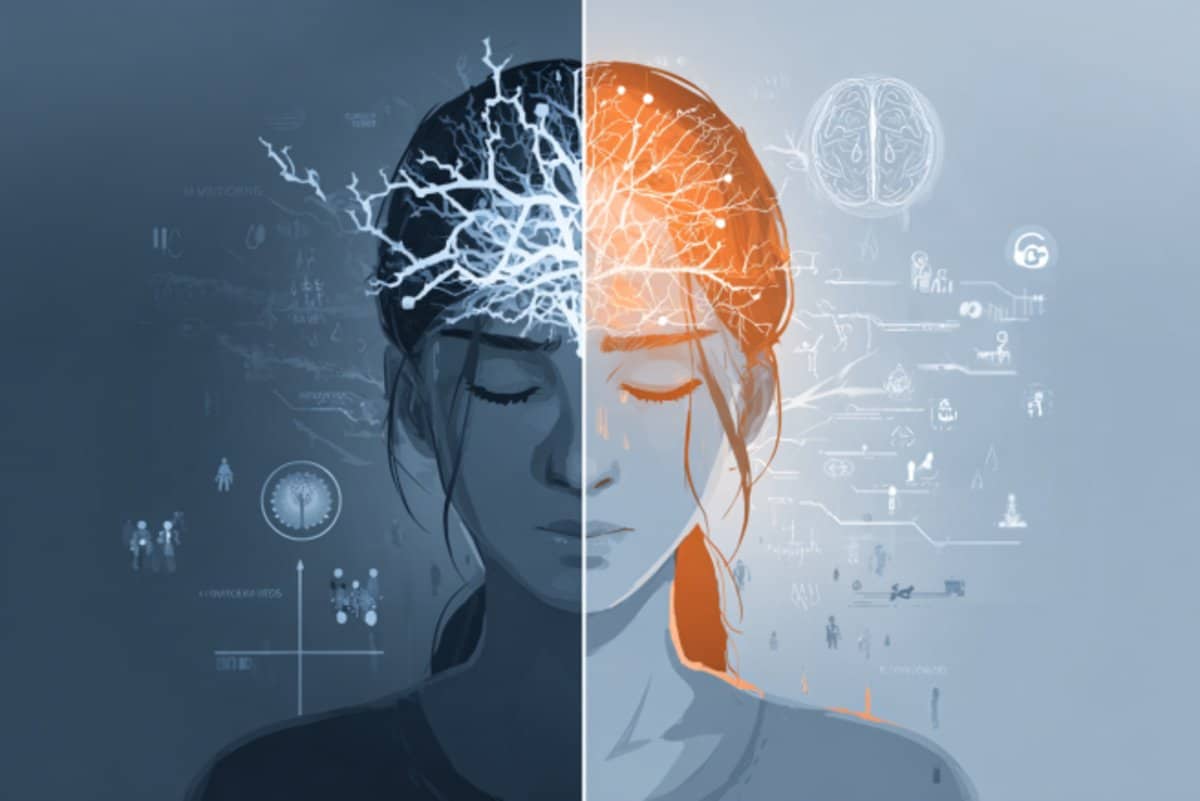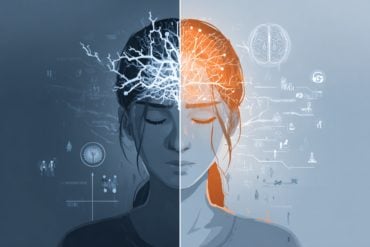Summary: A new study reveals that the same clinical signs of depression may stem from different brain profiles, highlighting both one-to-one and many-to-one brain-symptom mappings. Using brain imaging data from the UK Biobank, researchers found that even when patients experience similar symptoms, their underlying neurobiology may differ significantly.
One brain profile was linked to impaired cognition, showing that MRI data might predict outcomes beyond what symptoms alone can indicate. This layered understanding of depression could pave the way for more personalized treatment approaches.
Key Facts:
- Many Paths to Depression: Multiple neurobiological profiles can result in identical symptoms.
- Imaging Reveals More: MRI brain data can predict clinical outcomes like cognitive decline.
- Toward Personalization: Subtyping depression by both symptoms and brain changes may improve treatment targeting.
Source: Elsevier
A novel study aimed at disentangling the neurological underpinnings of depression shows that multiple brain profiles may manifest as the same clinical symptoms, providing evidence to support the presence of both one-to-one and many-to-one heterogeneity in depression.
The findings of the study in Biological Psychiatry highlight the layered and complex interactions between clinical symptoms and neurobiological sources of variation.
John Krystal, MD, Editor of Biological Psychiatry, comments, “Depression is a very heterogeneous medical condition. The inability to accurately subtype patients is a major obstacle to matching individual patients to treatments that are more likely to be effective for them.
“This study makes progress toward this objective. Of note, it unites clinical assessments and brain imaging findings to generate depression subtypes.”
Lead investigator Janine D. Bijsterbosch, PhD, Mallinckrodt Institute of Radiology, Washington University School of Medicine in St. Louis, explains, “Heterogeneity in depression, i.e., differences between patients with the same diagnosis, has been a topic of interest in our field for a long time.
“For example, patients with depression can differ from one another in clinical characteristics (e.g., what symptoms they experience, what age their depression first started, and how many episodes they have had), and patients can also differ in their neurobiology (e.g., what brain changes are linked to their depressive symptoms).
“Although prior studies have investigated both these clinical and neurobiological dimensions, we wanted to develop a more thorough understanding of these sources of variation in depression and their relationship.”
Using population-based data from the UK Biobank from multiple imaging sites, investigators tested whether clinical and neurobiological heterogeneity have a simple relationship (“one-to-one brain-symptom mapping,” in which one neurobiological profile is related to one clinical profile), or whether clinical and neurobiological heterogeneity have a more complicated relationship (“many-to-one brain-symptom mapping,” suggesting that multiple neurobiological profiles may give rise to the same depressive symptoms).
The researchers grouped individuals with depression based on their specific clinical presentations and found unique groups of people who experienced one symptom (such as depressed mood) but not other common symptoms of depression (such as low motivation). They then compared the neurobiological profiles of these groups to a group with a mixed symptom profile.
Co-investigator Yvette I. Sheline, MD, Perelman School of Medicine, University of Pennsylvania, says, “Our findings showed that dividing people up into groups based on their clinical presentation of depression led to stronger and more distinct brain changes as compared to a group with a mixed clinical presentation.
“Our research also showed that more than one brain profile gave rise to the same clinical presentation in patients with acute depression, providing concrete evidence of many-to-one brain-symptom mapping for the first time.
“Notably, one of the neurobiological profiles we uncovered was associated with worse cognition, which is an important clinical outcome that can substantially impact individuals’ lives; an MRI scan of neurobiology may have the potential to predict clinical outcomes that depression symptom screening alone cannot capture.”
Depression is one of the most common mental health disorders, with 9.2% of Americans experiencing an episode each year. Despite its prevalence, depression often goes underdiagnosed, and treatment efficacy is poor; only 30% of patients respond to the first line of treatment.
Co-investigator Deanna M. Barch, PhD, Department of Psychological & Brain Sciences, Washington University, and Department of Psychiatry and Mallinckrodt Institute of Radiology, Washington University School of Medicine in St. Louis, concludes, “We hope our findings will motivate future work attempting to disentangle the variations in depression, leading to the development of tools that address the layered and complex relationships between clinical and neurobiological sources of heterogeneity that we revealed.
“Identifying distinct subtypes of depression that may respond differently to treatment could greatly improve clinical care for patients with depression in the future.
“However, our findings show that identifying such subtypes of depression will only be achievable by addressing both clinical and neurobiological heterogeneity.”
About this depression and neuroscience research news
Author: Eileen Leahy
Source: Elsevier
Contact: Eileen Leahy – Elsevier
Image: The image is credited to Neuroscience News
Original Research: Open access.
“Parsing Clinical and Neurobiological Sources of Heterogeneity in Depression” by Janine D. Bijsterbosch et al. Biological Psychiatry
Abstract
Parsing Clinical and Neurobiological Sources of Heterogeneity in Depression
Background
Patients with depression vary from one-another in their clinical and neuroimaging presentation, yet the relationship between clinical and neuroimaging sources of variation is poorly understood. Determining sources of heterogeneity in depression is important to gain insights into its diverse and complex neural etiology.
This study aims to test if depression heterogeneity is characterized by subgroups that differ both clinically and neurobiologically and/or whether multiple neuroimaging profiles give rise to the same clinical presentation.
Methods
This study utilizes population-based data from the UK Biobank over multiple imaging sites. Clinically dissociated groups were selected to isolate clinical characteristics of depression (symptoms of anhedonia, depressed mood, and somatic disturbance; severity indices of lifetime chronicity and acute impairment; and late onset).
Residual neuroimaging heterogeneity within each group was assessed using neuroimaging driven clustering.
Results
The clinically dissociated subgroups had significantly larger neuroimaging normative deviations than a comparison heterogeneous group and had distinct neuroimaging profiles from each other.
Imaging driven clustering within each clinically dissociated group identified two stable subtypes within the acute impairment group that differed significantly in cognitive ability, despite identical clinical profiles.
Conclusions
The study identified distinct neuroimaging profiles related to particular clinical depression features that may explain inconsistencies in the literature and sub-clusters within the acute impairment group with cognitive differences that were only differentiable by neuroimaging.
Our results provide evidence that multiple neuroimaging profiles may give rise to the same clinical presentation, emphasizing the presence of complex interactions between clinical and neuroimaging sources of heterogeneity.







